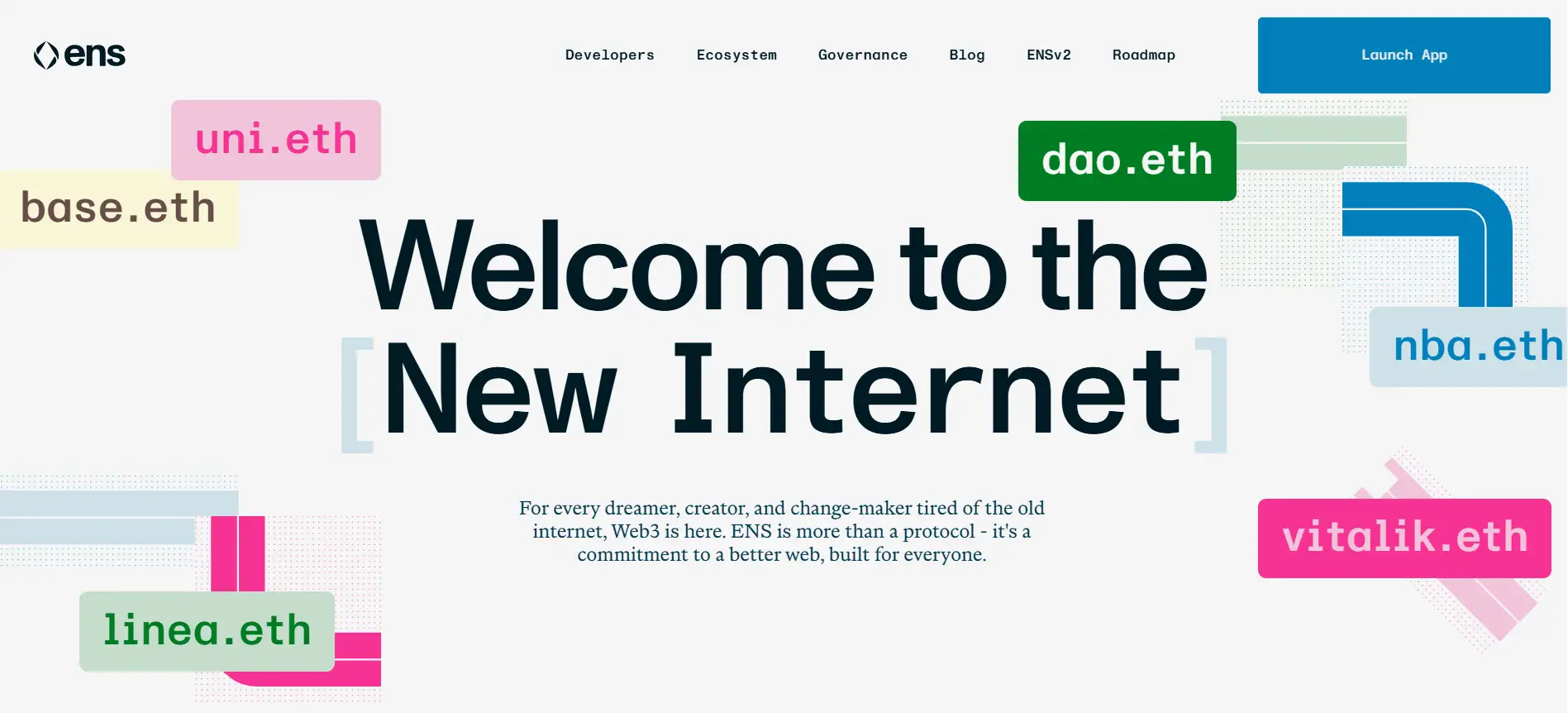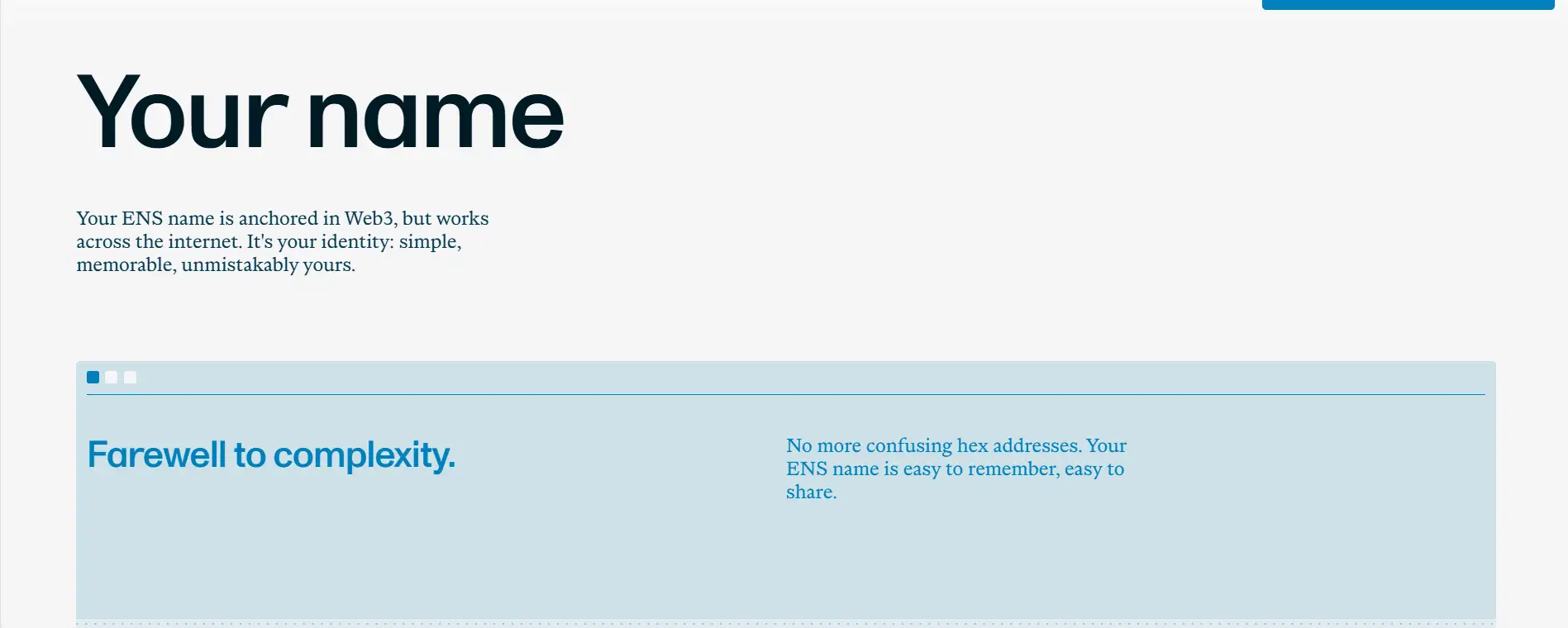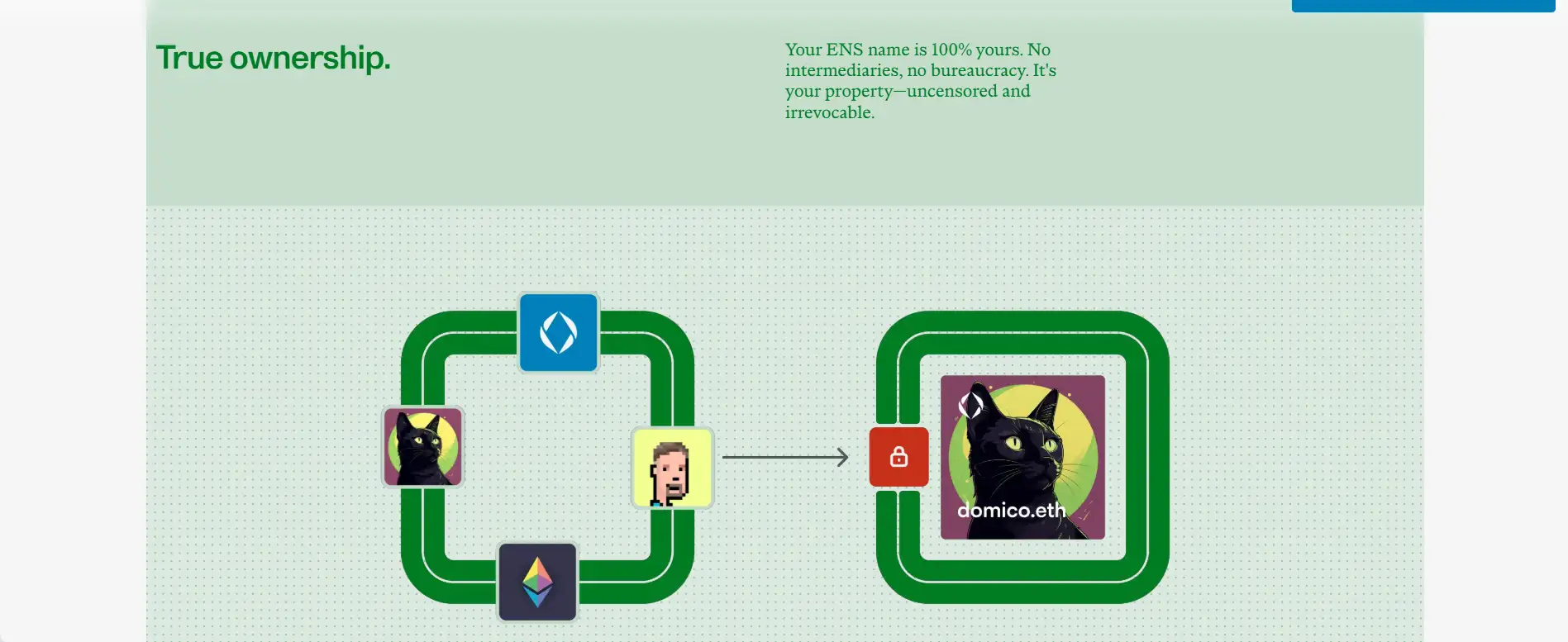About ENS
ENS (Ethereum Name Service) is a decentralized protocol that replaces long and unreadable Ethereum wallet addresses with simple, human-readable names like username.eth. This innovation eliminates the need to remember or share complex hexadecimal strings, allowing users to seamlessly connect across Web3 services. With full on-chain ownership and universal compatibility, ENS brings identity to the blockchain in a way that is secure, memorable, and interoperable.
Backed by the power of Ethereum and governed by a decentralized autonomous organization (DAO), ENS has become the go-to solution for digital identity in the decentralized world. The protocol is designed to foster a more user-friendly experience across DeFi, NFTs, DAOs, and dApps, establishing a permanent identity layer for the new internet.
Ethereum Name Service (ENS) was launched to address one of the key user-experience issues in blockchain: long, unreadable wallet addresses. Since its inception, ENS has empowered over 798,000 users to register more than 1.6 million names, with integrations into over 750 platforms—from Coinbase Wallet and Rainbow to Etherscan and Uniswap.
ENS operates as a public good governed by its DAO. The ENS community collectively manages the protocol via $ENS tokens, which serve as governance tokens enabling users to vote on proposals that shape ENS’s future. Through its proposal and voting system, ENS has funded numerous ecosystem projects, distributed grants, and enhanced protocol security with a robust bug bounty program.
With the announcement of ENSv2, the platform is advancing into a multi-chain identity solution. This update introduces Namechain, an Ethereum L2 based on Linea’s zkEVM, which brings near-zero gas fees, instant finality, and native cross-chain support. In ENSv2, each .eth name becomes its own smart contract registry, providing greater customization and utility for users, teams, and organizations.
As Web3 expands, ENS continues to lead the charge in on-chain identity, replacing outdated DNS systems with blockchain-native solutions. Competitors like Unstoppable Domains and FIO Protocol offer similar services, but ENS’s deep integration with the Ethereum ecosystem and community-first governance model give it a distinctive edge.
ENS provides numerous benefits and features that solidify its role as a leader in the Web3 identity space:
- Human-Readable Naming: Replace complex wallet addresses with easy-to-remember .eth names, improving accessibility and usability.
- Cross-Platform Consistency: Your ENS name works seamlessly across wallets, dApps, DAOs, and DeFi platforms.
- True Ownership: Names are stored on-chain and owned by the user, offering full decentralization with no intermediaries.
- Integration with Key Partners: ENS is integrated with Coinbase Wallet, Brave Browser, GoDaddy, Uniswap, and many more.
- DAO Governance: Holders of the $ENS token can propose and vote on protocol upgrades and community grants.
- Namechain via ENSv2: Launching a scalable L2 to enable cheaper, faster, and more flexible usage of ENS names across chains.
ENS makes it simple to establish your Web3 identity with just a few steps:
- Step 1: Visit the ENS App: Go to ens.app and connect your wallet.
- Step 2: Search and Register: Use the search bar to find your desired .eth name. If it's available, you can register it immediately by paying a small ETH fee.
- Step 3: Set Your Records: Add records to your ENS name, including wallet addresses, website links, avatars, and other identifiers.
- Step 4: Manage in Your Wallet: ENS names can be managed in popular wallets like Metamask, Rainbow, or Coinbase Wallet.
- Step 5: Participate in the DAO: If you hold $ENS tokens, visit the ENS DAO Forum and Tally to vote on proposals and help shape the protocol’s future.
- Resources: Developers can explore the ENS documentation and join the developer community to build on ENS.
ENS FAQ
ENS domains are minted as NFTs on the Ethereum blockchain, granting you full ownership without reliance on centralized services. Once registered, your .eth name is held in your wallet and is completely transferable, giving you uncensorable, permanent control over your identity. You can get started at ens.app.
Namechain is ENS's new Layer 2 built on Linea’s zkEVM, offering near-zero gas fees, instant finality, and native cross-chain support for ENS names. It allows users to manage and register domains more efficiently while retaining full ownership. Explore the roadmap at ens.domains.
Yes, your ENS name can point to wallet addresses, websites, avatars, social media links, and more—functioning as your decentralized digital identity. It supports advanced profile data and can even link to content hosted on IPFS. Start configuring your ENS profile at ens.app.
ENS stands out by being deeply integrated with the Ethereum ecosystem and governed by a decentralized DAO. Unlike competitors such as Unstoppable Domains or FIO Protocol, ENS is built on open standards and is natively supported by hundreds of wallets, dApps, and services across Web3.
To participate in ENS governance, hold $ENS tokens in your wallet and connect to voting platforms like Tally. You can vote on active proposals or delegate your tokens to a community contributor through the ENS DAO Forum.
You Might Also Like












